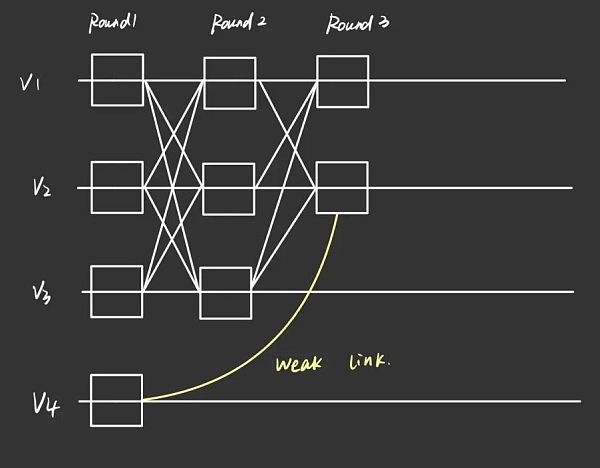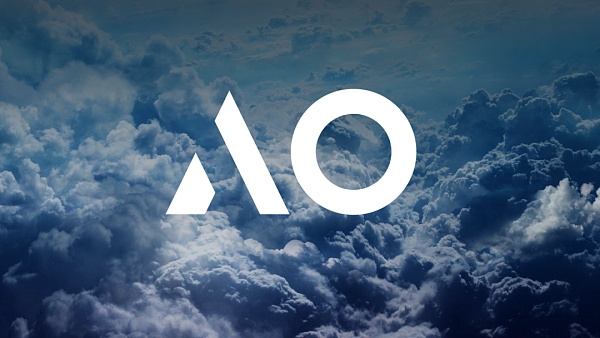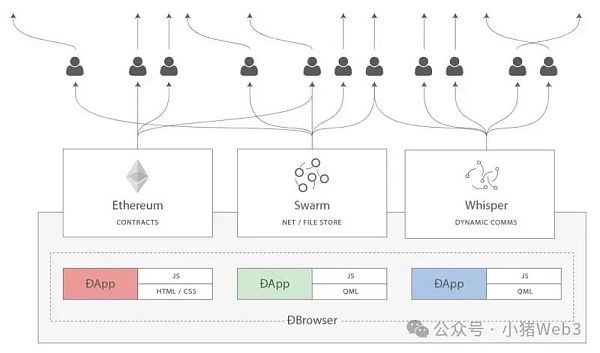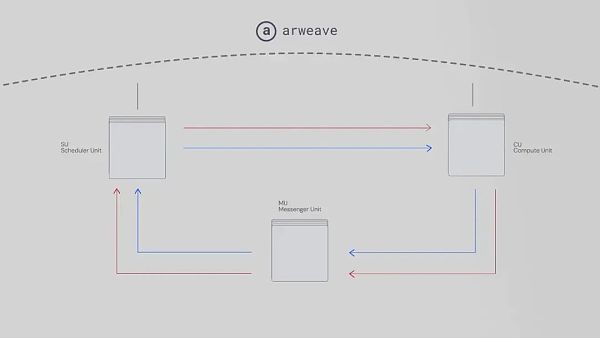Source: PermaDAO
The first principle of blockchain is a decentralized accounting method, where "blocks" and "chains" are not necessary.
What are first principles?
First principle thinking refers to returning to the most basic conditions of things, breaking them down into various elements for deconstruction and analysis, and thus finding the best path to achieve the goal. This principle originated from the ancient Greek philosopher Aristotle and became known to the public because of Elon Musk's admiration. This principle also has something in common with the "Tao" in Eastern philosophy.
In 2014, Elon Musk spoke about his first principles decision-making approach in his graduation speech at the University of Southern California Business School:
“Maybe you’ve heard me say that thinking about problems from a physics perspective is the first principle. That is, don’t reason by analogy. You break things down into the most basic elements you can imagine, and then you reason from there. This is a good way to determine whether something makes sense. This kind of thinking is not easy, and you may not be able to think this way about everything because it takes a lot of energy. But if you want to innovate knowledge, then this is the best way to think. This framework was proposed and developed by physicists, and they have figured out counter-intuitive things, such as quantum mechanics. So this is a very effective and very powerful method. In any case, be sure to do this as much as possible.”
Musk took the vacuum capsule high-speed rail as an example. If you use comparative thinking or empirical thinking to design a new train product, most people’s idea is to improve the existing functions to make the power stronger and the fluid mechanics better. However, if we use the first principles to analyze product demand, we must return to the essential purpose of transportation tools: transporting more goods from point A to point B. This is the original purpose of manufacturing trains and other transportation tools. It is not necessary to use traction to achieve upgrades. Supported by the first principles, Musk proposed to use the mode of magnetic levitation plus low vacuum to build a vacuum capsule high-speed rail.
First principles in blockchain
So what are the first principles of blockchain?
Dr. Xiao Feng said in his speech at the closing ceremony of the 2024 Hong Kong Web3 Carnival: The first principle of blockchain is a new accounting method.
"Blockchain, which came out in 2009, as a distributed ledger (DLT), records digital value and network value, and no longer records accounts on private ledgers, but on an open and transparent global public ledger. Everyone records accounts together, and all stakeholders record accounts on one ledger. This is the first principle of blockchain, a transparent and open "global public ledger". All Web3 innovations are based on the first principles. ”
The author agrees with Dr. Xiao Feng’s point of view, and further elaborates on the essence of blockchain based on this point of view.
The three words "blockchain" can be broken down into blocks + chains. Since the first principle of blockchain is a way of accounting, are blocks and chains really necessary?
Before answering this question, let us first look at why Bitcoin, as a distributed ledger, needs blocks and chains.
In Bitcoin, a block is a digital record containing a set of transaction information, which can be understood as a page in the ledger. A hash value can be calculated using a hash function. The characteristic of this hash value is that as long as the content of the block changes slightly, the hash value will become different. Each block contains the hash value of the previous block, which can be understood as the first line of the N+1th block to write the hash calculated by the Nth block, thus forming an unalterable chain structure.
In Bitcoin, the mechanism for synchronizing ledgers is PoW. Consensus mechanism. When transactions occur in the Bitcoin network, these transactions are placed in the memory pool (mempool). Then, miners select a group of transactions from the memory pool and try to form a new block. To do this, miners need to find a specific value in the random number and combine this specific value with the block data to generate a hash value that meets the network difficulty target. This process is called "mining". Whoever calculates the qualified hash value first obtains the right to record the account, that is, the mining is successful. The difficulty target is a dynamic value that is adjusted every 2016 blocks (approximately every two weeks) to keep the average block time of Bitcoin at around 10 minutes.
Blocks and chains are the basic structure of Bitcoin, and PoW is the consensus mechanism of Bitcoin. The combination of the two realizes the decentralized accounting function of Bitcoin. But from the essence of blockchain, as long as decentralized accounting can be achieved, accounting can be non-block (such as single transaction consensus) and the ledger can be a non-chain structure (such as DAG). Therefore, blocks and chains are not necessary, but the three words blockchain are deeply rooted in people's hearts and have become the basis of Bitcoin, Ethereum, Solana It is just a synonym for the decentralized ledger represented by .
After all, Bitcoin is a product of 2009. With the continuous development of blockchain research, although most blockchains still follow the traditional block + chain structure, some blockchains designed based on first principles have also emerged. They start from the most fundamental decentralized accounting problem and have unique data structures and consensus. This article takes Sui and Arweave AO as examples.
Sui: The Way of Water

Sui is a Layer1 redesigned and built based on first principles. The main team comes from the disbanded Diem and Novi projects of Facebook (later renamed Meta). Sui's name comes from the Japanese word for water, and the influence of water can also be seen in its brand image.
Sui uses Sui Move to write its smart contracts, adopting an object-based data model, where all transactions take objects as input and produce new or modified objects as output, allowing independent objects to process transactions in parallel.
In Sui Move, each smart contract is a module consisting of function and structure definitions. Structures are instantiated in functions and can be passed to other modules through function calls. Structure instances stored at runtime are objects, and there are three different types of objects in Sui, namely owner objects, shared objects, and unchangeable objects.
Sui has no blocks, and transactions are verified separately, and whether a transaction goes through Sui's sorting and consensus mechanism depends on whether the objects in the transaction are shared or unshared.
Transactions that do not involve shared objects are called simple transactions. Sui uses a lightweight algorithm called Byzantine Consistent Broadcast, referring to the design ideas of FastPay. The client broadcasts the transaction to all validators of Sui, collects the validators' equity-weighted votes, generates a certificate, and then broadcasts the certificate back to the validators. The validators who receive the certificate can directly execute the transaction.
If the transaction involves a shared object, it is called a complex transaction. Sui uses the Narwhal & Bullshark consensus mechanism. Narwhal is a mempool module responsible for ensuring the availability of transactions. Narwhal operates based on rounds, and each round is divided into two steps, namely the distribution of transactions (synchronizing transactions to other nodes) and the verification of transactions (collecting votes from other nodes on transactions). After multiple rounds, the transactions will form a directed acyclic graph (DAG). Bullshark is a consensus module responsible for sorting transactions in the DAG in Narwhal.

Sui uses DAG for transaction propagation and consensus, which reduces transaction latency and network overhead during communication. At the same time, in order to maintain the integrity and order of historical information, Sui sorts transactions into checkpoints in a separate process, and the checkpoints are linked to each other in a linear manner, providing a structure similar to the traditional blockchain for storing and accessing historical data.
But in fact, Sui's data structure is completely different from that of the traditional blockchain. The transactions grouped into checkpoints by Sui have been finalized, while the traditional blockchain groups transactions that have not yet been finalized into blocks.
Arweave AO: The Way of the Void

Water has no permanent shape, but it is tangible after all. Just like Sui also retains the consensus mechanism in the traditional blockchain, and finally organizes the transaction data into the block + chain structure of the traditional blockchain. AO has completely overturned the paradigm of traditional blockchain. There is no block, no chain, and no consensus. Compared with water, AO is closer to the sky (Sora in Japanese) in symbolic meaning. AO is a distributed, decentralized, actor-oriented computing system based on Arweave. The first principle it is based on is not to build a decentralized ledger, but to build a decentralized computing system. It is roughly similar to the relationship between applications and operating systems. The computing system can be divided into three problems: storage, computing, and communication. There are very mature solutions in Web2. The difficult part is decentralization. One idea is to build a decentralized storage network, a decentralized computing network, and a decentralized communication network respectively. This is actually the idea of the decentralized technical architecture of computing, storage, and communication proposed by Gavin Wood, co-founder of Ethereum in 2014. Ethereum (smart contracts) is responsible for the decentralized computing part, Swarm is responsible for the decentralized storage part, and Whisper is responsible for the decentralized communication part.

AO also consists of three units:

Communication Unit (Messenger Unit): responsible for message communication, passing messages to computing units and coordinating to calculate output results;
Scheduler Unit: responsible for scheduling and message sorting, and uploading messages to Arweave.
Compute Unit: responsible for processing calculations and uploading calculation results to Arweave.
A process on an AO consists of a group of units, each of which can be used as a horizontally scalable subnet to perform a large number of transactions at the same time, thereby achieving high-performance computing, but each unit is not a decentralized network. In fact, in the entire AO architecture, the only truly decentralized thing is Arweave, the underlying storage network.
The process on AO has the property of verifiability by uploading its holographic data to Arweave - because anyone can restore the process on AO through the holographic data. This is actually a storage consensus paradigm (SCP), that is, as long as the storage is immutable, the transactions above are traceable, so no matter where the application is calculated, the same result will be obtained.
AO has no consensus mechanism, but through SCP, the computing layer is separated from the storage layer, making the storage layer permanently decentralized, while the computing layer maintains the mode of the traditional computing layer. Therefore, there is no type of limitation on the computational scalability on AO. Not only can we realize blockchain ledger services with EVM, WASM or Move virtual machines as the core, but we can even rebuild any existing Web2 services on AO as decentralized versions.
Summary
The first principle is to think about the essence of things from the perspective of physics, and then start from the essence and design layer by layer. Although Sui and Arweave AO are both blockchains designed based on the first principle, they have completely different architectures because of their different essences.
The essence of Sui is a decentralized ledger service, which is benchmarked against high-performance Layer1 such as Solana. Therefore, Sui designs an object-oriented data model around "faster ledger services", a dual consensus mechanism and parallel execution of transactions based on state access, which improves scalability while reducing latency and costs. It allows developers to quickly and cheaply develop applications based on Sui Move smart contracts.
The essence of Arweave AO is a decentralized computing system, or decentralized cloud service, which is the infrastructure for running ledger services. Therefore, AO proposed SCP around the "verifiable distributed computing system", that is, computing off-chain and storing on-chain to achieve the interconnection and collaboration of large-scale parallel computers. The user experience is almost the same as traditional cloud services, but behind it is a decentralized computing system.
 JinseFinance
JinseFinance
 JinseFinance
JinseFinance JinseFinance
JinseFinance JinseFinance
JinseFinance JinseFinance
JinseFinance JinseFinance
JinseFinance JinseFinance
JinseFinance JinseFinance
JinseFinance JinseFinance
JinseFinance JinseFinance
JinseFinance JinseFinance
JinseFinance